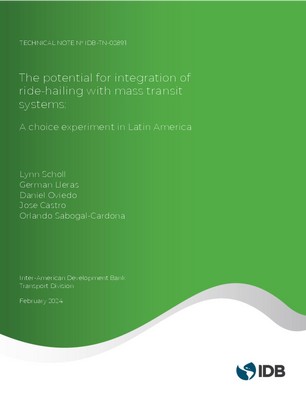The Potential for Ride-hailing Integration with Mass Transit Systems: A choice Experiment in Latin America
Date
Feb 2024
As transportation alternatives facilitated by TNCs (Transportation Network Companies) have gained popularity around the world, research has increasingly focused on understanding their impacts on urban mobility, with several studies examining whether they are competing with public transit trips, increasing vehicle kilometers, or contributing to congestion. Recent policy discussions have turned to whether these services could also have positive benefits, such as complementing mass transit services as a first- and last-mile solution. Most research to date has focused on industrialized countries, with little work focusing on Global South cities. Seeking to fill significant evidence gaps on the impacts of ride-hailing on travel behavior, this paper builds on a stated preference survey in three large metropolitan areas in Latin America (Bogota, Medellin, and Mexico City) to evaluate the potential of introducing an integrated scheme of ride-hailing and mass transit. The scenario of the integrated scheme places ride-hailing as a filler of the first- and last-mile gap left by mass transit. We use discrete choice models and simulations to assess the potential for modal shifts under different pricing scenarios. Results suggest limited feasibility (or modal shifts) of an integrated system of ride-hailing with mass transit under the scenarios considered. Even with significant discounts on the integrated fare, for two of the three cases, the additional ridership would remain comparatively low. Nevertheless, this opens the door for considering other app-based mobility options operating under a sharing perspective and that can reduce operative costs in an integrated scheme.
NO




